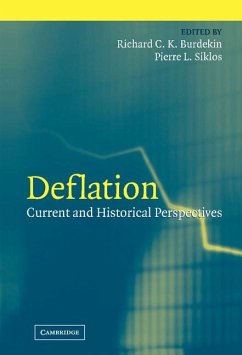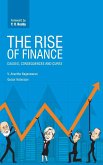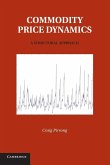Short description/annotation
This collection is the first in many years to analyze recent and historical trends in deflation.
Main description
Until recently fears of deflation seemed nothing more than a relic of the Great Depression. However, beginning in the 1990s, persistently falling consumer prices have emerged in Japan, China and elsewhere. Deflation is also a distinct possibility in some of the major euro area economies, especially Germany, and emerged as a concern of the US Federal Reserve in 2003. Deflation may be worse than inflation not only because the real burden of debt rises but also because firms would confront rising real wages in a world where nominal wage rigidity prevails. This volume explores some key themes regarding deflation including: (i) how economic agents and policy makers have responded to deflation, (ii) the links between monetary policy, goods price movements, and asset price movements, (iii) the impact of deflation under different monetary policy and exchange rate regimes, and (iv) stock market reactions to deflation.
Table of contents:
1. Fears of deflation and the role of monetary policy: some lessons and an overview Richard C. K. Burdekin and Pierre L. Siklos; 2. Deflation, silent runs, and bank holidays in the great contraction Hugh Rockhoff; 3. Price change, financial stability, and the British economy, 1870-1939 Forrest Capie and Geoffrey Wood; 4. Deflation dynamics in Sweden: perceptions, expectations and adjustment during the deflations of 1921-23 and 1931-33 Klas Fregert and Lars Jonung; 5. Boom-busts in asset prices, economic instability, and monetary policy Michael D. Bordo and Olivier Jeanne; 6. Deflation, credit and asset prices Charles Goodhart and Boris Hofmann; 7. Is deflation depressing(?)33; evidence from the classical gold standard Michael D. Bordo and Angela Redish; 8. The strong lira policy and deflation in Italy's inter-war period Michele Fratianni and Franco Spinelli; 9. Deflation and stagnation in Japan: collapse of the monetary transmission mechanism and echo from the 1930s Michael M. Hutchison; 10. Deflation, the financial crises of the 1890s, and stock exchange responses in London, New York, Paris and Berlin Lance Davis, Larry Neal and Eugene White; 11. The stock market and the business cycle in periods of deflation, (hyper-)inflation, and political turmoil: Germany 1913-1926 Martin T. Bohl and Pierre L. Siklos; 12. Deflationary pressures and the role of gold stocks: 1929, 1987 and today Richard C. K. Burdekin and Marc D. Weidenmier.
Hinweis: Dieser Artikel kann nur an eine deutsche Lieferadresse ausgeliefert werden.
This collection is the first in many years to analyze recent and historical trends in deflation.
Main description
Until recently fears of deflation seemed nothing more than a relic of the Great Depression. However, beginning in the 1990s, persistently falling consumer prices have emerged in Japan, China and elsewhere. Deflation is also a distinct possibility in some of the major euro area economies, especially Germany, and emerged as a concern of the US Federal Reserve in 2003. Deflation may be worse than inflation not only because the real burden of debt rises but also because firms would confront rising real wages in a world where nominal wage rigidity prevails. This volume explores some key themes regarding deflation including: (i) how economic agents and policy makers have responded to deflation, (ii) the links between monetary policy, goods price movements, and asset price movements, (iii) the impact of deflation under different monetary policy and exchange rate regimes, and (iv) stock market reactions to deflation.
Table of contents:
1. Fears of deflation and the role of monetary policy: some lessons and an overview Richard C. K. Burdekin and Pierre L. Siklos; 2. Deflation, silent runs, and bank holidays in the great contraction Hugh Rockhoff; 3. Price change, financial stability, and the British economy, 1870-1939 Forrest Capie and Geoffrey Wood; 4. Deflation dynamics in Sweden: perceptions, expectations and adjustment during the deflations of 1921-23 and 1931-33 Klas Fregert and Lars Jonung; 5. Boom-busts in asset prices, economic instability, and monetary policy Michael D. Bordo and Olivier Jeanne; 6. Deflation, credit and asset prices Charles Goodhart and Boris Hofmann; 7. Is deflation depressing(?)33; evidence from the classical gold standard Michael D. Bordo and Angela Redish; 8. The strong lira policy and deflation in Italy's inter-war period Michele Fratianni and Franco Spinelli; 9. Deflation and stagnation in Japan: collapse of the monetary transmission mechanism and echo from the 1930s Michael M. Hutchison; 10. Deflation, the financial crises of the 1890s, and stock exchange responses in London, New York, Paris and Berlin Lance Davis, Larry Neal and Eugene White; 11. The stock market and the business cycle in periods of deflation, (hyper-)inflation, and political turmoil: Germany 1913-1926 Martin T. Bohl and Pierre L. Siklos; 12. Deflationary pressures and the role of gold stocks: 1929, 1987 and today Richard C. K. Burdekin and Marc D. Weidenmier.
Hinweis: Dieser Artikel kann nur an eine deutsche Lieferadresse ausgeliefert werden.








